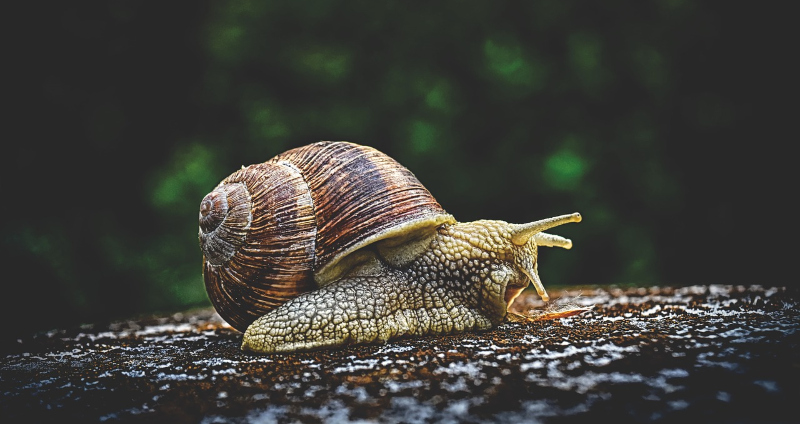
When my wife and I moved into Seattle’s Maple Leaf neighborhood in 1975, there were no snails in our garden. At the time, I saw them south of Green Lake. When our young family trooped down to the freeway overpass at NE 75th to watch Fourth of July fireworks, the snails had come that far north, a move that had taken them about ten years. By the early 2000s, they had slithered up the hill and by 2010 were frolicking my garden.
The invasion represents a mix of molluscan species including Mondemia fedelis, a handsome if clueless little native, and the elegant yellow and black invader: Cepaea nemoralis. A French vintner in San Jose, pining for escargot, imported them in the 1850s. A century later they crossed the Columbia, and now here they are, in white face and miniature black berets, insufferable mimes pretending to gag on my snail pellets, eye stalks swaying melodramatically as they flop over, radulas lolling out of their sneering, thin-lipped, little Gallic mouths. A less attractive confrere, Cornu aspersum (indeed!) is raising hell in Port Townsend.
We carry on about Trump and why nothing seems to work anymore. Meanwhile the living world shifts beneath our feet. Opossums from Dixie took up residence in my shed 15 years ago. The armadillos aren’t far behind. Authorities tell us the closest armadillos live in Colorado, but on May, 2018, a drunk driver crashed his Chevrolet Silverado in Midland, Pierce County, trying to avoid one, he said. I notice these things.
I first saw mahogany clams, Arctica islandica, in 2005 on the beach at East Sound on Orcas Island. Arriving in ballast water from Asia, they have lovely purple interiors, but because of their biology, they store more toxins than the native littlenecks they replace and would as soon kill you as look at you if they had eyes. One of the best bowls of chowder I’ve had anywhere was served to me recently at a waterfront dive in Ilwaco at the mouth of the Columbia. When I asked what the delicious meaty clams in it were, they said “Arctic clams.” They use them instead of littlenecks. Could it be? If so, I appear to have dodged the bullet. This time.
And six months ago what do I find while strolling the beach at Golden Gardens Park? Veneruptis philippinarum!! Also called Manila clams, they are all the rage in seafood restaurants now, having bumped littlenecks off the menu.
Philippinarum hitched a ride on the Pacific Oyster, Crassotea gigas (!!) introduced from Japan into Willapa Bay in 1902. A reproductive maniac, much larger than the native Olympia oyster, Ostrea lurida, and able to thrive in shallow water, they created huge reefs that displaced eel grass beds and Olympia oysters on Willapa Bay, Hood Canal, and Puget Sound. Raw Crassotea gigas looks like a vast nasal discharge on a half-shell, and only recently has the more flavorful lurida been assisted in making a comeback.
These are only very few of many biological changes happening locally, not from global warming but because of intentional and accidental introductions, and the inexorable movements of migrant creatures whose agendas have nothing to do with ours.
